
Joseph Kessel, also known as "Jef", was a French journalist and novelist. He was a member of the Académie française and Grand Officer of the Legion of Honour.
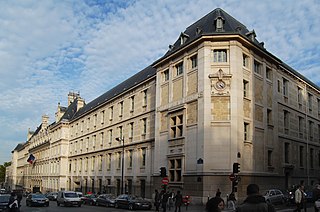
The Lycée Louis-le-Grand, also referred to simply as Louis-le-Grand or by its acronym LLG, is a public Lycée located on rue Saint-Jacques in central Paris.
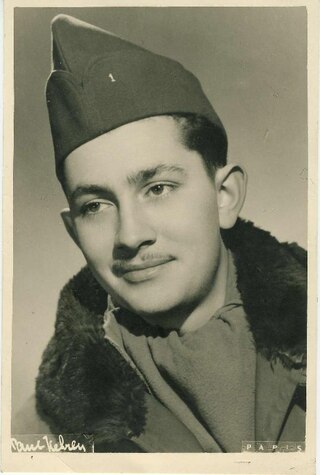
Jean-Claude Villeminot, better known as Jean-Claude Pascal, was a French comedian, actor, singer and writer.
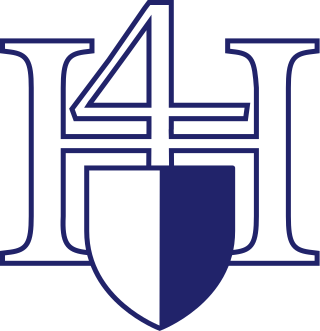
The Lycée Henri-IV is a public secondary school located in Paris. Along with the Lycée Louis-le-Grand, it is widely regarded as one of the most prestigious and demanding sixth-form colleges (lycées) in France.

The Collège Stanislas de Paris, colloquially known as Stan, is a private Catholic school in Paris, situated on "Rue Notre-Dame-des-Champs" in the 6th arrondissement. It has more than 3,000 students, from preschool to classes préparatoires, and is the largest private school in France. Stanislas is considered one of the most prestigious and elite French schools. The school was ranked 1st from 2019 to 2022 for middle school and 1st in 2019 for high school.
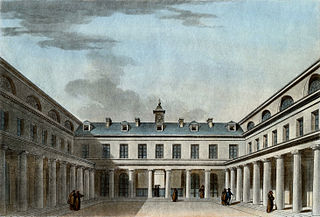
The Lycée Condorcet is a school founded in 1803 in Paris, France, located at 8, rue du Havre, in the city's 9th arrondissement. It is one of the four oldest high schools in Paris and also one of the most prestigious. Since its inception, various political eras have seen it given a number of different names, but its identity today honors the memory of the Marquis de Condorcet. The school provides secondary education as part of the French education system. Henri Bergson, Horace Finaly, Claude Lévi-Strauss, Marcel Proust, Jean-Luc Marion, Francis Poulenc and Paul Verlaine are some of the students who attended the Lycée Condorcet.

Lycée Lakanal is a public secondary school in Sceaux, Hauts-de-Seine, France, in the Paris metropolitan area. It was named after Joseph Lakanal, a French politician, and an original member of the Institut de France. The school also offers a middle school and highly ranked "classes préparatoires" undergraduate training. Famous French scientists and writers have graduated from lycée Lakanal, such as Jean Giraudoux, Alain-Fournier and Frédéric Joliot-Curie. The school includes a science building, a large park, a track, and dormitories for the Pôle Espoir Rugby and the boarding students. Several teachers also live at the school along with boarding students. The main classrooms and the dormitories are in one building, and the school uses space heaters in every classroom except the science building's classrooms and the gymnasium.

The Lycée du Parc is a public secondary school located in the sixth arrondissement of Lyon, France. Its name comes from the Parc de la Tête d'Or, one of Europe's largest urban parks, which is situated nearby.

The Lycée Buffon is a secondary school in the XVe arrondissement of Paris, bordered by boulevard Pasteur, the rue de Vaugirard and the rue de Staël. Its nearest métro station is Pasteur. It is named for Georges-Louis Leclerc, comte de Buffon. Jean-Claude Durand is its current proviseur.

The Lycée Sainte-Geneviève is a private lycée, located in Versailles and providing preparatory classes for grandes écoles. It was founded by the Jesuits in Paris in April 1854. It is often nicknamed Ginette and sometimes BJ, standing for Boite à Jèzes.

The Lycée Saint-Louis-de-Gonzague (Franklin), founded in 1894, is a highly selective Roman Catholic, Jesuit school in the 16th arrondissement of Paris. It is regarded as the most prestigious French private school and has been ranked #1 lycée in France in the ranking of the newspaper Le Figaro.

The lycée polyvalent de Turgot is a lycée located in the 3rd arrondissement of Paris. Its entrance is located at 69 rue de Turbigo. It runs classe préparatoire aux grandes écoles in the D1, D2, PC and ECT streams.

The Lycée Saint-Thomas-d’Aquin is a Catholic upper-secondary educational institution located in the heart of the 7th arrondissement of Paris, France. It is notably famous for having once been the establishment where widely celebrated French statesman Général Charles de Gaulle, figurehead of the French Résistance effort during WWII and later elected President of France, undertook his primary studies.

The lycée Fénelon Sainte-Marie is a private Catholic school located in the 8th arrondissement of Paris. It takes classes from the 6th form to the end of education.
Located at 106, rue du Faubourg-Poissonnière in the 10th arrondissement of Paris, Rocroy Saint-Vincent de Paul is a mixed private Catholic school under contract of association with the State.
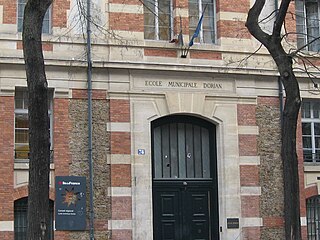
The lycée Dorian is a multi-functional school in the 11th arrondissement of Paris, founded in 1887, with a focus on science and technology.

The lycée Paul-Valéry, commonly known as PV, is a public general and technological school in the 12th arrondissement of Paris located at 38, boulevard Soult. It is a lycée specialising in science, economics, literature and arts, particularly known for its courses in cinema and audiovisual, which were the first created in France, in 1983.

The lycée Claude-Bernard is a French public school opened in 1938, both a collège and a lycée. It is located at 1, avenue du Parc-des-Princes in Paris, in the 16th arrondissement of Paris, and bears the name of French doctor Claude Bernard (1813–1878).

The collège-lycée Jean-Baptiste-Say is a French public school built in 1895, operating as a collège and lycée as well as offering preparatory classes. It is located at 11 bis, rue d'Auteuil in Paris, in the 16th arrondissement of Paris and bears the name of French classical economist Jean-Baptiste Say (1767–1832). It is often known as JBS, and its students as "Sayens". The lycée is served by the Métro stations Michel-Ange – Auteuil and Église d'Auteuil. In 2016, it was named best public lycée in France by the newspaper Le Monde ahead of Lycée Henri IV.
Events from the year 1593 in France


















